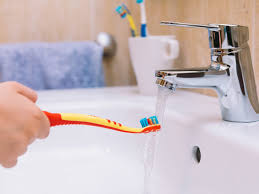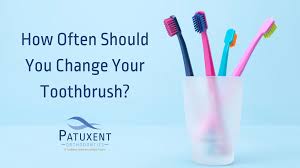
Why You Should Rethink Your Toothbrush Routine
Brushing your teeth is one of the most basic and essential parts of daily hygiene — something most of us do without much thought. But what if your toothbrush routine isn’t as effective as you think? Or worse, what if it’s doing more harm than good?
From how you brush, to how often you replace your toothbrush, to the type of brush you use — rethinking your toothbrush routine could be the key to better oral health, fresher breath, and even overall wellness. Let’s dive into why your current habits might need an upgrade and how small changes can make a big difference.
The Problem with Over-Brushing and Aggressive Techniques
Many people believe brushing harder or longer cleans better, but research shows that brushing too hard or using a hard-bristled brush can damage your gums and enamel.
-
Gum recession: Aggressive brushing wears down gum tissue, exposing sensitive tooth roots.
-
Enamel erosion: Too much pressure can erode the protective enamel, increasing cavities and sensitivity.
-
Toothbrush abrasion: Overzealous brushing causes tiny scratches on teeth, making them prone to stains and decay.
How Often Should You Really Replace Your Toothbrush?
Dentists recommend replacing your toothbrush every 3 months, but most people stretch it far longer.
-
Worn bristles lose cleaning power and can harbor bacteria.
-
After illness, swapping out your brush prevents reinfection.
-
Keeping an old brush might introduce more germs than it removes.
Pro tip: If your bristles are frayed or bent, it’s time for a new one — even if it’s before 3 months.
Electric vs. Manual: What’s Better?
Electric toothbrushes have surged in popularity — but are they worth it?
-
Electric brushes often clean more thoroughly with less effort, especially for people with limited dexterity.
-
Studies show they reduce plaque and gingivitis more effectively than manual brushes.
-
However, manual brushing done correctly can be just as effective.
The key is technique, not just the tool.
The Right Brushing Technique
Experts recommend these tips for effective brushing:
-
Use a soft-bristled brush to protect gums and enamel.
-
Hold the brush at a 45-degree angle to your gumline.
-
Use gentle, circular motions rather than harsh back-and-forth scrubbing.
-
Brush for two minutes, twice a day — enough to clean every surface.
-
Don’t forget to brush your tongue to reduce bacteria and freshen breath.
Beyond Brushing: Don’t Ignore Flossing and Mouthwash
Brushing only cleans about 60% of your mouth’s surfaces. Flossing removes plaque and food trapped between teeth where your brush can’t reach.
-
Daily flossing lowers the risk of gum disease and cavities.
-
Mouthwash can help reduce bacteria and freshen breath, but shouldn’t replace brushing or flossing.
How Your Toothbrush Routine Affects More Than Just Your Mouth
Poor oral hygiene has been linked to systemic health issues like:
-
Heart disease
-
Diabetes
-
Respiratory infections
-
Pregnancy complications
Maintaining a smart toothbrush routine supports your entire body, not just your smile.
Final Thoughts
Your toothbrush routine might seem simple, but it’s packed with opportunity to improve your oral health and overall well-being.
Rethink how you brush, when you replace your brush, and what tools you use. Small tweaks—like switching to a soft-bristled brush, mastering your technique, or upgrading to an electric model—can protect your gums, brighten your smile, and keep you healthier for years to come.
Because your smile deserves more than just a quick scrub. It deserves a thoughtful routine.
